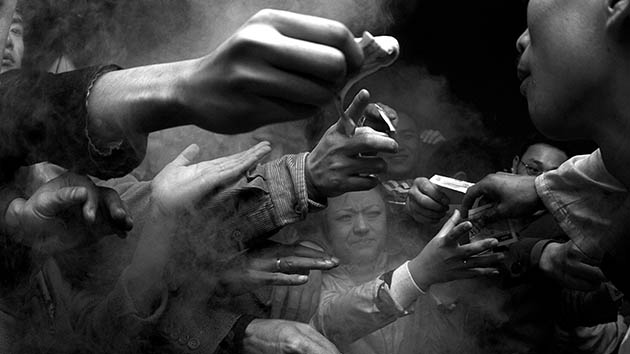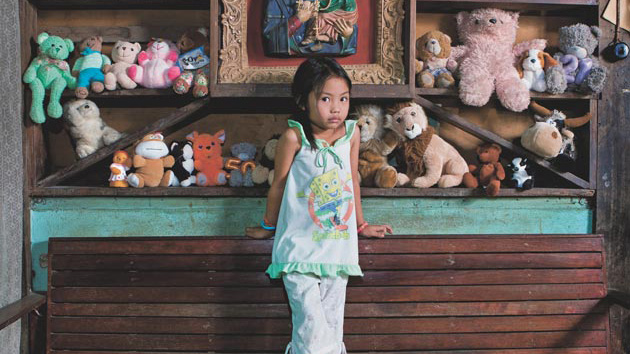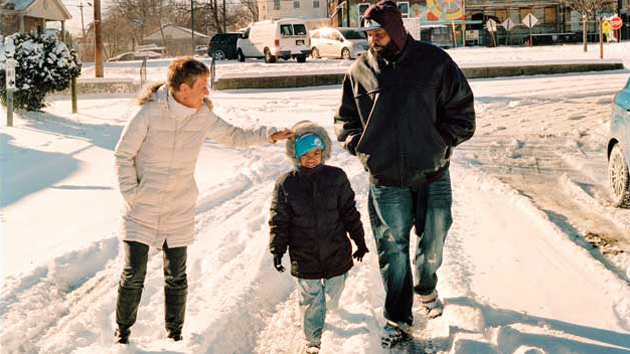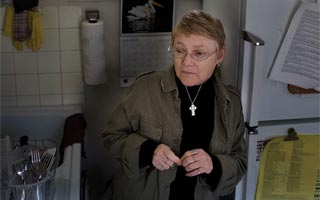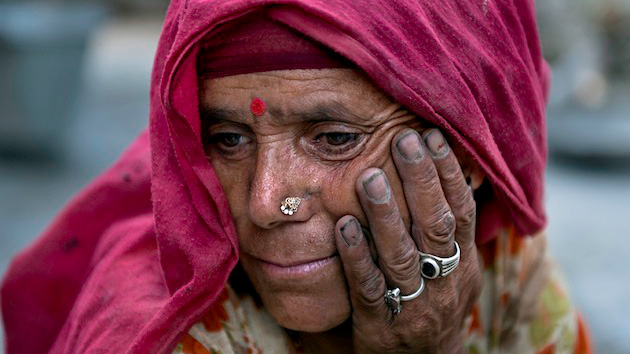
Subadra Devi left India after a drought killed her crops. Now she's a laborer in the Himalayan foothills. All photographs by Renée C. Byer
Living in a wealthy nation, it’s easy to forget that a whopping one-sixth of the world’s population subsists without stable sources of food, medical care, or housing. More than a billion people around the world are believed to live on a dollar a day—and often less. While the circumstances leading to that sort of extreme poverty are varied and complicated, the situations faced by the planet’s poorest are depressingly familiar. A new book out this week painstakingly documents the circumstances of some of them. Written by Thomas A. Nazario, the founder of a nonprofit called The Forgotten International, and vividly reported and photographed by Pulitzer Prize winner Renée C. Byer, Living on a Dollar a Day: The Lives and Faces of the World’s Poor offers a window into these people’s everyday lives, and calls for action on their behalf. I spoke with Nazario about his motivations, global inequality, and how to avoid the savior complex.
Mother Jones: Tell me a little about why you created this book.
Thomas A. Nazario: It grew out of a foundation I established about seven years ago. I was tired of spending time with people on the street all over the world who had simply been forgotten—by their families, by their village, and by whatever communities they might be associated with. There seemed to be so many of them, particularly in developing countries. It hit me that something had to be done. I wanted to bring to the attention of the world community that every day these people exist on almost nothing. We spend an awful lot of time in malls and taking care of ourselves and our immediate needs, and these people never enter our consciousness. Why does it take a typhoon or an earthquake to wake up people to the truth that far more people die of poverty every day?
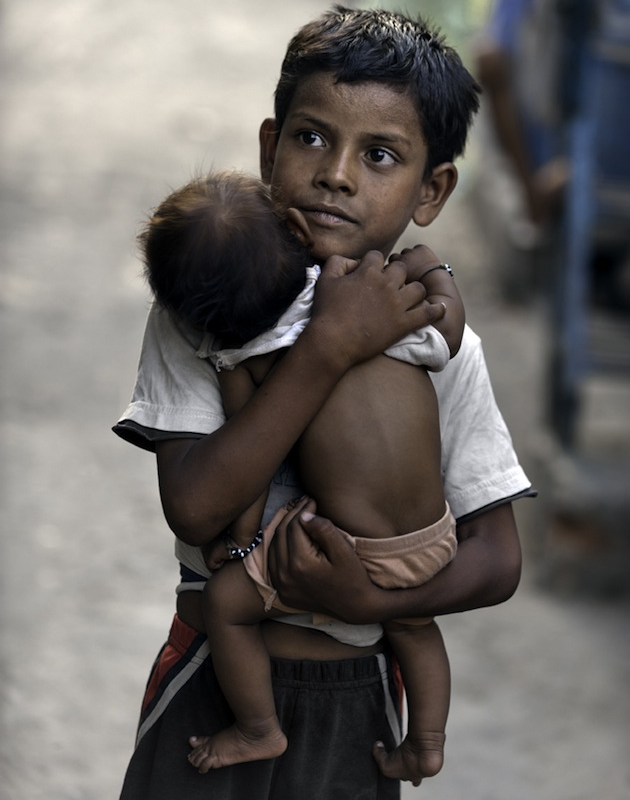
MJ: What was your selection process like?
TN: I wanted there to be some cultural and ethnic and racial diversity. I certainly didn’t want to just focus on places like Africa, or those first places we think of when we think of extreme poverty. I also knew of circumstances that existed in given countries that were really quite compelling. So I came up with 10 countries and began to organize trips. That doesn’t mean we caught every story we wanted to catch, but there were also stories we found along the way.
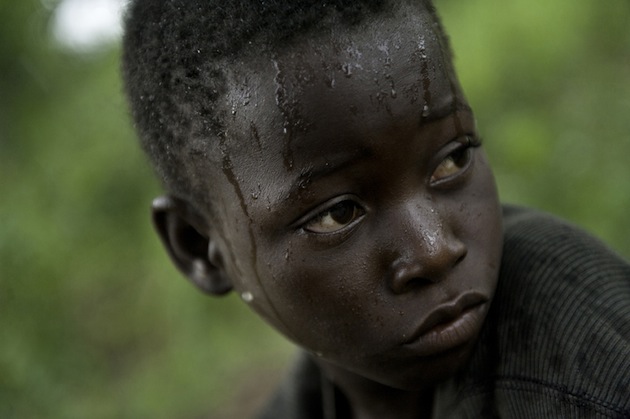
MJ: Which stories affected you the most?
TN: There are three. One was the kids who live on an e-waste dump in Ghana. That was quite compelling for a variety of reasons, but I think if you look at the book and see those photographs and read that piece, it’ll hit you pretty hard.
Another piece was a family in Peru that lives on recycling. That, in and of itself, is not a big deal. Recycling is probably the second-largest occupation of the poor. But [the mother’s] personal story, about how she had been abused by two different husbands, how her boys were taken away because they were needed to farm, and she was given all the girls—and how her kids will probably not ever go to school. She gets constantly evicted from one place or another because she can’t find enough recycling to pay the rent. When we left her—we gave everybody a gift of at least some kind for giving us their time and telling us their story—we gave her $80, which is about as much money as she makes in two months. She fell to her knees and started crying. Not only did I learn that 25 percent of garbage produced in developing countries is picked up by individuals like her, but that one of the biggest drivers of global poverty is domestic violence, and how women and children are thrown into poverty largely for that reason.
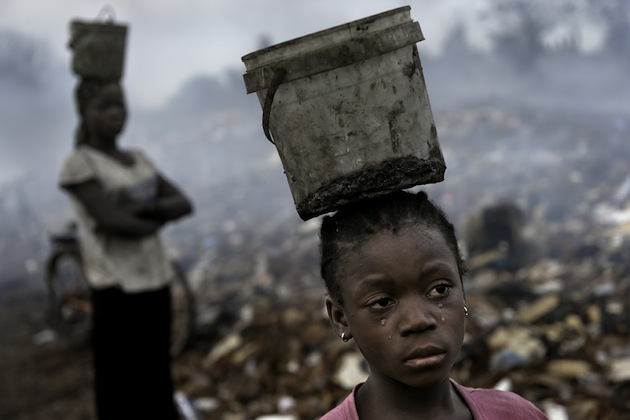
The third story that really touched me was about a woman and her family in Bangladesh. She works in a sewing factory about 8 to 12 hours a day, six and a half days a week, and makes 17 cents an hour. Of course we’ve heard about these sweatshops. They fall apart, they kill people, the working conditions are terrible; people sleep on the floor. But instead of finding someone who was beaten up emotionally, we found someone who was smiling most of the time because she was getting a regular salary, her husband was working, and she actually had a husband who was a kind and gentle fellow. That made it possible for her to keep her kids in school, to educate them properly, to have some hopes and dreams for them in the future, and to probably break out of poverty—if not in this generation, then the next. That meant the world to her. The truth of the matter is that, even though we hear terrible things about sweatshops and phone centers, in many ways they’ve done more to lift people out of poverty in the last 20 years than almost anything else. That was a realization that I didn’t expect.
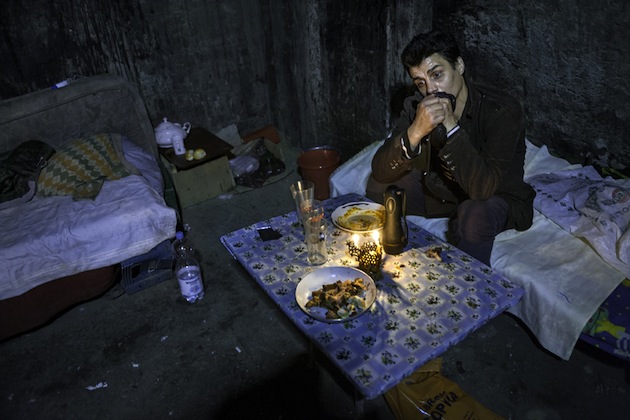
MJ: There are many contributing factors to poverty, and gender can be a huge one. Can you elaborate?
TN: It’s one of the biggest reasons why women and children live in poverty. Not only do they make far less than men doing the same kind of work—even if they get the same kind of work—but often they’re saddled with raising the children, and that keeps them at home. So they have a limited number of hours and they usually work in labor markets that are informal at best. If you couple that with the fact that they are often required to get water for the family—which in many cases takes three to four hours a day—and that they have to get the food and so forth. Many families think of women as a liability rather than an asset, which is why they’re often sold as children into prostitution or trafficking.
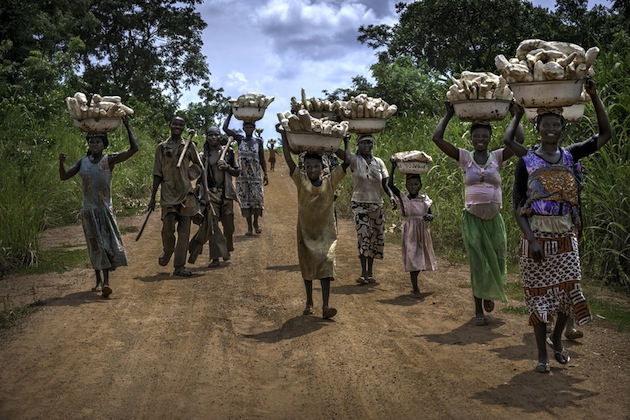
MJ: Climate change plays a big role, too. People on the financial margins are more likely to be affected. Did you see that playing out at all?
TN: We met a woman in Bolivia. She’s over 80 years old. She works her own little farm. She grows wheat and beans. And she frankly didn’t like us— largely because we were from the US. Over the past 20 years, she says, her wheat no longer grows, there’s not enough rain, there’s too much heat, and her beans are almost worthless. She says the biggest reason for this is countries like the United States putting so much carbon in the air. Her climate has changed and made it impossible for her to live. She lives on a mountainside where there used to be quite a bit of rain, snow, and fresh water. Climate change is affecting an awful lot of the poorest of the poor. When you think that subsistence farming is the largest job of the world’s poor, it’s no wonder they’re the first to feel the effects when there’s not enough rain or there’s more drought or flooding.
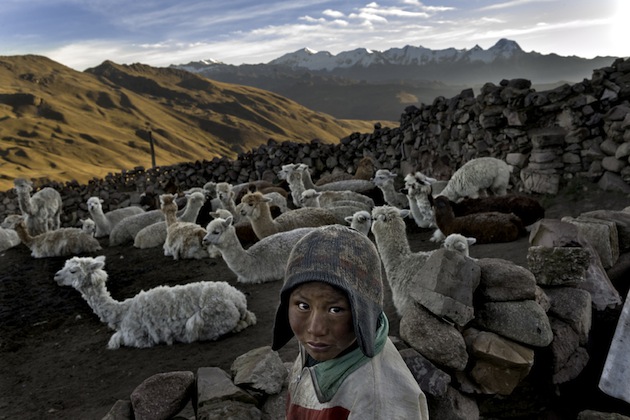
MJ: According to Oxfam, the 85 richest people have as much money as the poorest half of the world, and 70 percent of people live in countries where economic inequality has increased in the last three decades.
TN: It seems to be getting worse and worse and worse. When we talk about poverty, we talk about how that is associated with lifespan. If you live in a very, very poor country, you’ll probably live about half the time that you’ live in a rich country.
The other thing that’s troubling is that we have a number of billionaires in this country, and they control an amount of wealth so disproportionate that it’s frankly immoral. I think the more people learn about that, the more I think we’re looking at conflict resolution in parts of the world where these kinds of wealth disparities exist. The more it becomes obvious and the more it becomes troubling, the more people will rally around that and the more it will seem unfair. That’s one of the reasons we had the 99 percent movement not long ago.
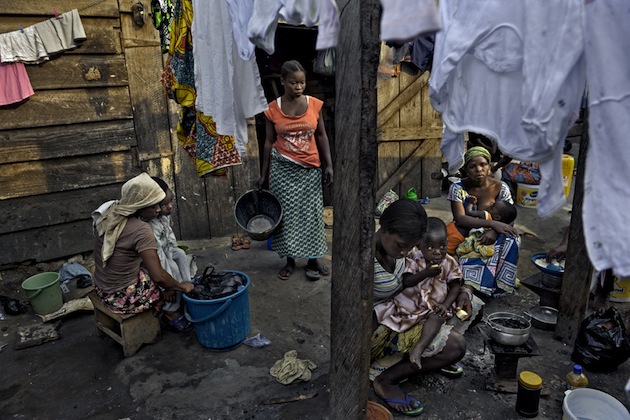 The Kayayo Girls of Accra collect waste or serve as porters for wealthier residents. They often live in communal settings near or atop the city dump. Renée C. Byer
The Kayayo Girls of Accra collect waste or serve as porters for wealthier residents. They often live in communal settings near or atop the city dump. Renée C. ByerMJ: We often hear that a disproportionate number of the poor are in the Global South—with one-third in India alone. Why is that?
TN: I think there are some historical reasons—certainly imperialism, and totalitarian systems, and government structures that have used the masses to build wealth have played a part. A country like the US really began to build wealth during the time of industrial revolution—once that happens and you build universities and provide young people with education. Then it kind of snowballs: Countries get richer largely because they have the infrastructure, the education, and the kinds of benefits that you’ll find in a wealthy country. Two hundred, maybe 250 years ago, there really wasn’t a big difference between rich countries and poor countries, rich people and poor people. We were pretty much all poor. Now we have enormous wealth in some countries and very little wealth in other countries.
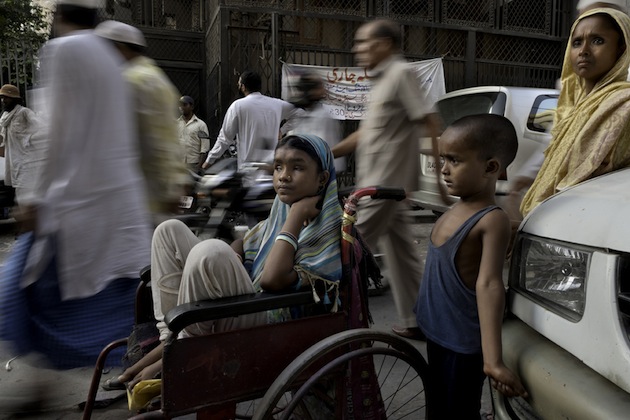
MJ: There’s a concern in the international development sphere about people acting out of a so-called savior complex. How do we separate this from genuine concern?
TN: One of the mistakes we often make is we go in on our white horse and try to dictate what might be best for other people instead of being far more inclusive and spending time with indigenous communities and really asking them. My experience is that most poor people actually have a pretty good sense of what would improve their lives and the lives of their children. They just don’t have the money or the means to get there. It’s that top-down thing that’s a problem, particularly if you have a white face and you’re in a community that sees no white faces. You really do have to work with people and come in with translators and get a sense of what the real needs are and help from the bottom up.
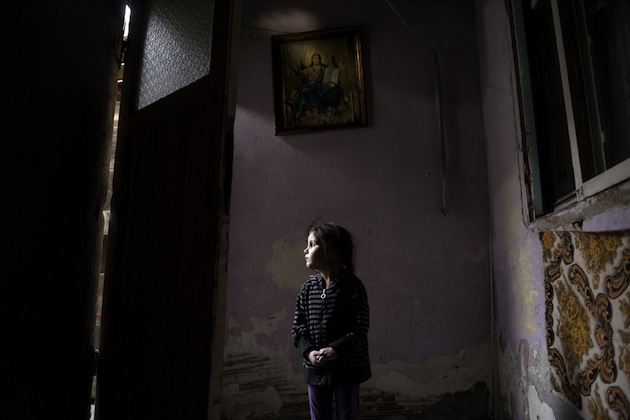
There are some things that almost always help alleviate poverty, and one is, of course, education. There’s almost nothing terribly political or ugly about providing decent schools in villages that have none—or clean water, or things that are so basic that no one’s going to argue with.
One message in the book is that you don’t have to be Bill Gates or Warren Buffet to go out and help. Everybody—particularly those in the middle class—are people who have enough money to go out once a week and buy a nice dinner. All of those people need to make a concerted effort to once a week or once a month really carve out a little of the funds that they don’t need and help somebody, whether it’s an individual or a family or a village somewhere or a school. We all have a duty to make the world a better place.
